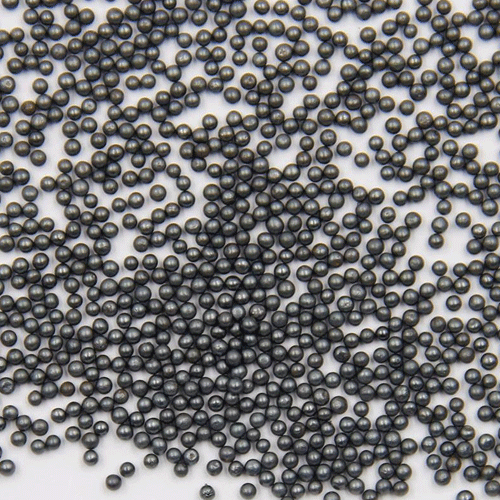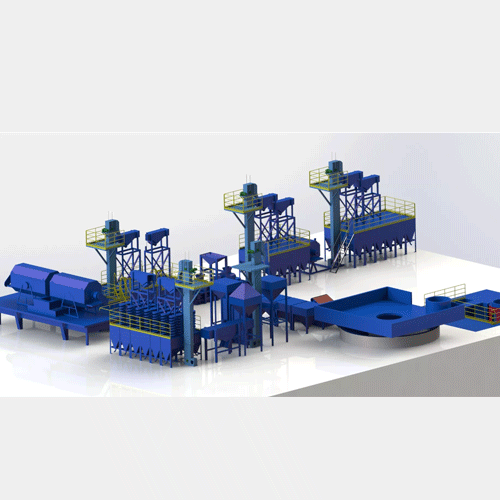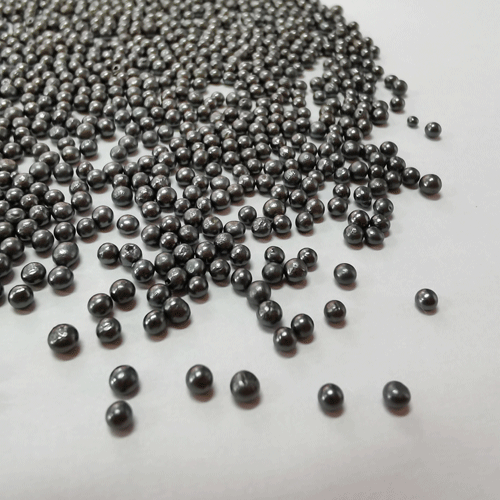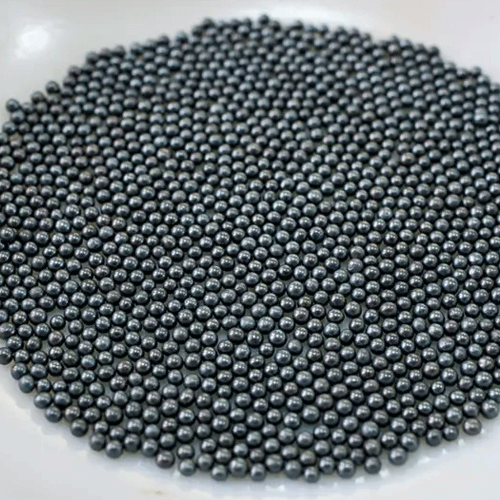Steel castings characteristics: "endogenous" pores, the solubility of the gas in the molten steel decreases sharply as the temperature decreases, and the gas diffuses to higher temperatures to the thicker parts of the wall, and in severe cases, it can be found in the lower part of the riser; "exogenous" pores, this type The pores are pear-shaped, with narrow necks pointing toward the gas source. They occur on the surface of the casting or under the skin and can be found after heat treatment or processing. Cause analysis: Poor deoxidation during the steelmaking process
1.1 There are four types of pores: intrusion pores, suppressed pores, reaction pores, and entangled pores
(1) Intrusion pores: larger in size, with smooth pore walls, surface oxidation, and most are pear-shaped or pear-shaped. Oval, located on the surface or inside the casting;
(2) Suppression pores: mostly small, round, oval or needle-shaped, distributed in the whole or part of the casting; the inner wall is smooth and bright;
(3) ) Reaction pores: located under the surface of the casting, some are scattered needle-shaped holes, and some are hidden in the upper part of the casting due to slag inclusions;
(4) Involvement pores: During the pouring process, the liquid metal is pumped by the pouring system or Porosity caused by gas trapped in the mold.
1.2 Causes of pores: Under normal pressure, any factors that increase the gas content in the metal and prevent bubbles from escaping from the metal surface may cause pores in castings. Reasons in production include:
(1) Structural reasons for castings:
1) Larger flat castings are in a horizontal position when pouring. When the bubbles floating in the liquid metal reach the flat surface, they are often unable to float due to non-flat obstruction, such as the surface has solidified. Or the bubbles cannot escape out of the mold through the core wall, resulting in pores;
2) The casting wall is thin, the pouring speed is fast, and the gas pressure is high, causing boiling;
3) The radius of the fillet at the concave corner of the casting is too small, which easily produces concave pores .
(2) Reasons for alloy smelting:
1) The quality of the metal charge is poor, the surface is severely oxidized, contains oil stains, the surface is porous, there are too many impurities, and the thickness is too thin. The metal material causes the gas and metal oxidation of the smelted liquid metal. Too much material content can easily cause pores in the casting;
2) The charge is moist;
3) The size of the metal charge is too small or too loose;
4) The deoxidation of the metallurgical process is incomplete, or the amount added is insufficient, and the floating part of the aluminum ingot enters the slag, causing actual The amount of aluminum used for deoxidation is insufficient;
5) Improper temperature control during the smelting process, the temperature of the molten steel is too low or the steel slag is too high;
6) The furnace wall, tap trough, and ladle are not fully dried;
7) Poor slag control;
8) Melting The time is too long;
9) The chemical composition of the alloy is unqualified.
(3) Process design reasons:
1) Poor core head design;
2) The gap between the core head is too large and the metal flows into the exhaust and is blocked;
3) The height of the sand box is too low and the static pressure is low;
4) The gating system is formed or selected incorrectly . The pouring system and cavity are involved in gas during the pouring process, which cannot be ruled out. Top pouring is used for tall castings. The drop is large, impact, splashing, simple pouring, the upper part solidifies early, and hinders liquid discharge;
5) The location of the inner gate is unreasonable;
6 ) The cavity is not properly vented, with too few risers or too few air outlets.
(4) Reasons for molding sand, core sand, and coatings:
1) The molding sand or core sand has poor air permeability, the sand is too fine, and the clay content is too high;
2) The moisture content of the molding sand is too high;
3) The refractoriness of the molding sand is too low (mold The wall is severely poured, resulting in a decrease in air permeability)
4) Gas is generated in the molding sand, and too much material is added;
5) Improper selection of paint, and too much material is added to the paint;
6) Improper handling of cold iron paint.
(5) Reasons for modeling and core making:
1) The sand core was poured with an exhaust channel or the exhaust was unreasonable;
2) The temperature of the sand mold, core, cold iron, core support, etc. was too different;
3) The sand mold was not thoroughly The welding is dry or moisture returns;
4) The cold iron or core support is not welded dry and the surface is rusty or stained with oil stains;
5) The local compactness of the sand mold or sand core is too high and the air permeability is too low;
6) The bubbles are involved due to pouring. Usually the pouring method is slow firs
 Metal surface shot peening process
Metal surface shot peening process
 Grinding Applications in the Automotive Industry
Grinding Applications in the Automotive Industry
 Tips and features for using shot blasting machine steel shots
Tips and features for using shot blasting machine steel shots
 Applications of low carbon steel shot
Applications of low carbon steel shot